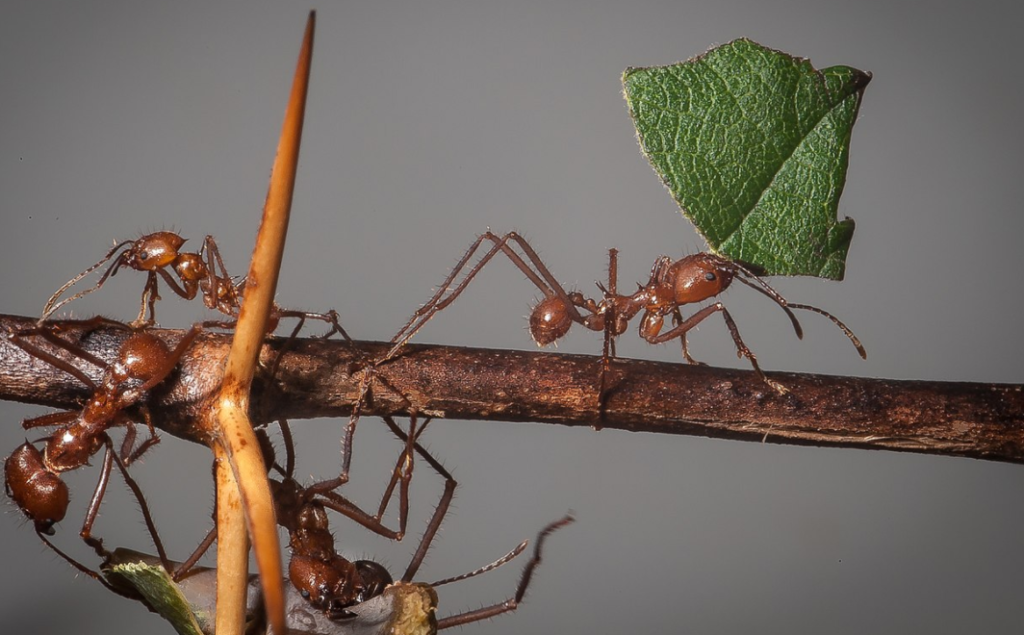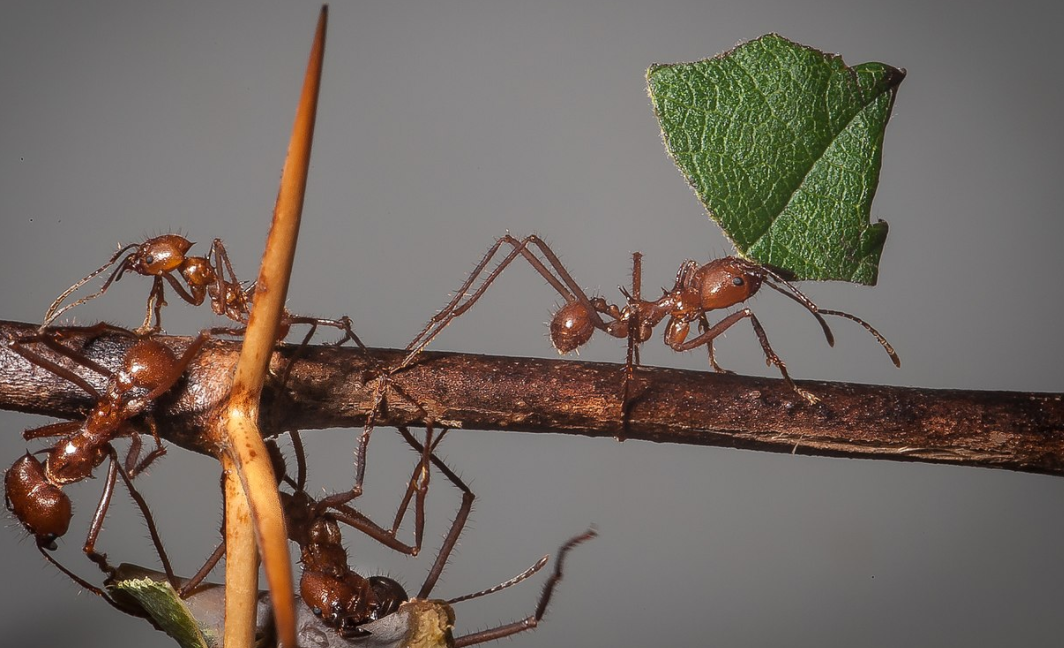Cutter Ants-Sompoposa
Cutter Ants-Sompoposhst that we are reprinting on this blog to help all Expats take care of their vegetable gardens. For us this was a great post that allows us to control the ant population and do that without chemicals.
“When I bought my farm about four years ago, we had an awful problem with ants. I was fortunate to hire a Nicaraguan who was raised on a farm and has a degree in agriculture. He planted a certain kind of beans around the area where the ants lived. The ants cut the leaves from the bean plants and took them to their nests. All of the ants died…..the problem went away and has not come back. Here in Nicaragua these beans are called Gandul or Canavalia and they should not be hard to find. These beans should not be eaten by humans and no, they are not cow peas, chick peas, etc. Below is an article in Spanish and English. CANAVALIA, MORE THAN A WHITE BEANThe peasants of Magdalena Medio use the canavalia bean (Canavalia ensiformis) to combat the arriera ant, a pest that eats the leaves of the crops and destroys them completely.
They do it by sowing it in the streets of the crops, around the mouths of the ant hills or by placing no less than ten kilos of leaves in these places; there it acts as a powerful fungicide against ants, preventing the development of a fungus that serves as a diet for the colony.The food in question, prepared based on the sting of leaves (of whatever species they find available), is replaced by those of canavalia, which, because it is a lethal fungicide, leaves the ants unable to feed and condemned to die of physical starvation. . But if the issue is not ants, the leaves of this plant, either fresh or ensiled, can be given to cattle, while the grains (white beans) can be ground, turned into flour and even added to the diet of poultry. On the other hand, in the cultivation lots, the canavalia bean (because it is a legume) improves the fertility of the soils, since it fixes nitrogen; Likewise, it can be used in rotation programs, that is, it is sown, it is waited for it to produce and, later, it is cut in its entirety and left as ground cover. ** For warm and temperate Native to Central and South America, it is a plant that measures up to two meters in height, has a deep root and as fruits it offers pods about 30 centimeters long, which carry up to 30 colored beans inside. ivory white. This species can be planted between zero and 1,800 meters above sea level, either under the shade of other species (such as timber) or in direct exposure to the sun; as a single crop of a lot, where up to 30,000 plants can be planted per hectare. The canavalia bean tolerates alkaline, acidic, saline, highly humid and low-fertility soils, but not those with high aluminum contents (such as those of the Eastern Plains). The species is propagated by seed, which must be buried about three centimeters deep, with the assurance that, 24 days later, for each seed you will obtain a vigorous and fast-growing tree; This is due to its high germination power. ** Fodder for livestock The canavalia bean is a legume that could be classified as a triple purpose: fungicide, fertilizer and food. At harvest, between 6 and 10 tons per hectare of beans protected within a pod can be obtained, which can be used to make flour for consumption by pigs or poultry. The potential of canavalia for ruminants is greater than with poultry and pigs, including the use of the whole plant, either as a component in pasture lots, where it can be mixed with other legume species or with grasses, the same as in systems feeding in total or partial confinement, says forest engineer Fredy Zapata, who has investigated this variety. ** Piedefoto The content of this species in the diet of the animals should never exceed 30%, which is why the advice of a zootechnician or livestock production technician is necessary.
Juan Carlos Dominguez CANAVALIA, MÁS QUE UN FRIJOL BLANCO
Los campesinos del Magdalena Medio utilizan el frijol canavalia (Canavalia ensiformis) para combatir la hormiga arriera, plaga que se come las hojas de los cultivos y los destruye totalmente.Por: REDACCION EL TIEMPO09 de octubre 2004 , 12:00 a.m.Lo hacen sembrándolo en las calles de los cultivos, alrededor de las bocas de los hormigueros o colocando no menos de diez kilos de hojas en dichos sitios; allí actúa como poderoso fungicida contra las hormigas, impidiendo el desarrollo de un hongo que sirve de dieta a la colonia.El alimento en cuestión, preparado con base en picadura de hojas (de cualquier especie que encuentren disponible), es reemplazado por las de canavalia, que por ser un fungicida letal, deja a las hormidas sin posibilidad de alimentarse y condenadas a morir de física inanición. Pero si el asunto no es de hormigas, las hojas de esta planta, bien sea frescas o ensiladas, pueden darse al ganado bovino, mientras que los granos (fríjoles de color blanco) pueden molerse, convertirse en harina y hasta adicionarse a la dieta de las aves de corral. De otra parte, en los lotes de cultivo el frijol canavalia (por tratarse de una leguminosa) mejora la fertilidad de los suelos, pues les fija nitrógeno; igualmente, puede utilizarse en programas de rotación, es decir, se siembra, se espera a que produzca y, posteriormente se corta en su totalidad y se deja como cobertura de suelos. ** Para cálido y templado Originario de centro y suramérica, es una planta que mide hasta dos metros de altura, cuenta con una raíz profunda y como frutos ofrece vainas de unos 30 centímetros de largas, que llevan en su interior hasta 30 fríjoles de color blanco marfil. Esta especie puede sembrarse entre los cero y los 1.800 metros de altura sobre el nivel del mar, bien sea bajo la sombra de otras especies (como maderables) o en directa exposición al sol; como cultivo único de un lote, donde pueden sembrarse hasta 30.000 plantas por hectárea. El frijol canavalia tolera los suelos alcalinos, los ácidos, los salinos, los altamente húmedos y los de baja fertilidad, pero no los que tienen altos contenidos de aluminio (como los de los Llanos Orientales). La especie se propaga por semilla, que debe enterrarse a unos tres centímetros de profundidad, con la seguridad de que, 24 días después, por cada semilla obtendrá un árbol vigoroso y de rápido crecimiento; esto se debe a su alto poder de germinación. ** Forraje para el ganado El fríjol canavalia es una leguminosa que podría calificarse de triple propósito : fungicida, fertilizante y alimento. En la cosecha pueden obtenerse de entre 6 y 10 toneladas por hectárea de fríjoles protegidos dentro de una vaina, que pueden usarse para fabricar harinas con destino al consumo de los cerdos o las aves. El potencial del canavalia para rumiantes es mayor que con aves y cerdos, incluyendo el empleo de la planta entera, bien sea como un componente en los lotes de pastos, donde puede mezclarse con otras especies leguminosas o con gramíneas, lo mismo que en los sistemas de alimentación en confinamiento total o parcial , dice el ingeniero forestal Fredy Zapata, quien ha investigado esta variedad. ** Piedefoto El contenido de esta especie en la dieta de los animales, nunca debe sobrepasar el 30%, por lo que se hace necesaria la asesoría de un zootecnista o técnico en producción pecuaria.”
Juan Carlos Domínguez


